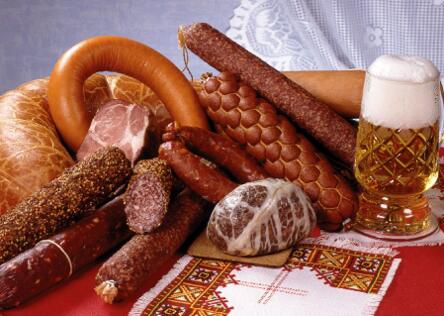Effect of Rolling and Kneading on Meat Quality (2)
2.The influence of rolling and kneading methods
Rolling methods include continuous rolling and intermittent rolling. When the total rolling time and rotating speed are the same, intermittent rolling can increase the yield by about 2%~3%, and the color is more uniform. This may be due to the fact that intermittent rolling can make the salting solution permeate sufficiently and distribute evenly, thus promoting the extraction of salt-soluble protein in muscle tissue, good adhesion of meat, and decrease of cooking loss. ;
The tenderness of intermittent rolling products is enhanced, which is mainly due to the large expansion of muscle cell sac due to the full hydration of muscle during the static process. In addition, the rolling method also includes directional problem. There is no obvious difference between clockwise and counterclockwise rolling from the yield and product quality, but the two-way rolling is better than one-way rolling, the slice quality is better, and the yield is increased by 1.5%. This may be related to the uniformity of rolling, and the two-way rolling has a higher uniformity.
3. The influence of meat size and rolling schedule
In the production and processing of different types of low temperature meat products, the initial processing of raw meat is different. For example, some products need to be divided into pieces of meat with a certain diameter, while some products need to be minced by a meat grinder to produce meat with a certain diameter. Therefore, different rolling processes should be adopted to produce good quality products.
At present, the types, sizes, structures and rotational speeds of rolling machines in the market are different. Meat pieces of the same size and shape are rolled by different rolling machines. It can not be simply measured by rolling time, but by rolling stroke.
The rolling process is too short, the muscle inside the meat is not relaxed, the salt water is not fully absorbed, the self-quality of salt-soluble eggs is less extracted, resulting in uneven color inside and outside the meat, small uniform structure, poor cohesion, water retention and slicing;
The long rolling process leads to the denaturation of salt-soluble protein in varying degrees, which makes the cohesiveness and water retention of meat pieces worse. Therefore, systematic research on the influence of rolling process on the quality of low-temperature meat products, standardization and standardization of rolling process are of great significance for stabilizing product quality such as texture, taste and water and oil retention.
The formula for calculating the rolling stroke is L=C*R*t, in which L is the rolling stroke; C is the inner circumference of the rolling machine, and its diameter is multiplied by the circumference pi; R is the rotating speed of the rolling machine; t is the rolling time (excluding the intermittent rolling time). Generally, products with a diameter of more than 10cm need a rolling journey of about 14000-16000m, products with a diameter of about 5 cm need a rolling journey of about 10 000 m, and products with a diameter of 3-6 mm need a rolling journey of 1500-2000m. Extending the rolling journey can reduce product wear and tear.

